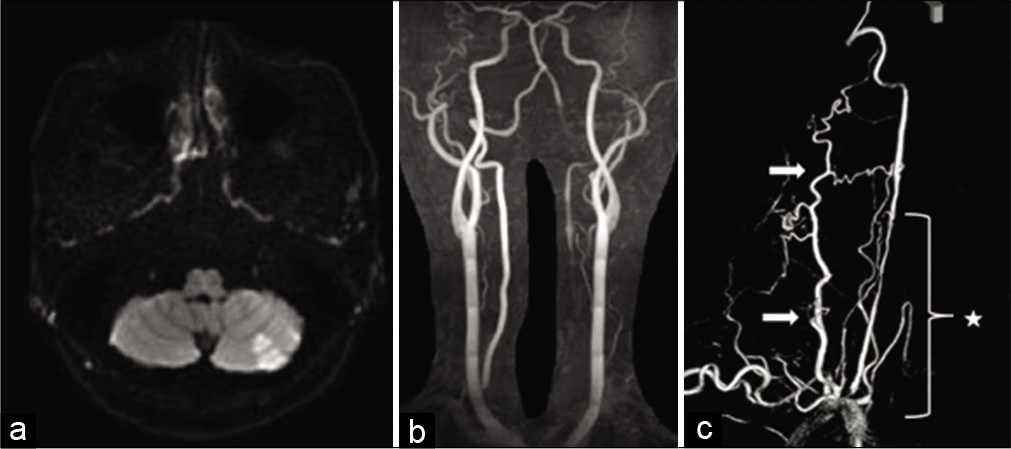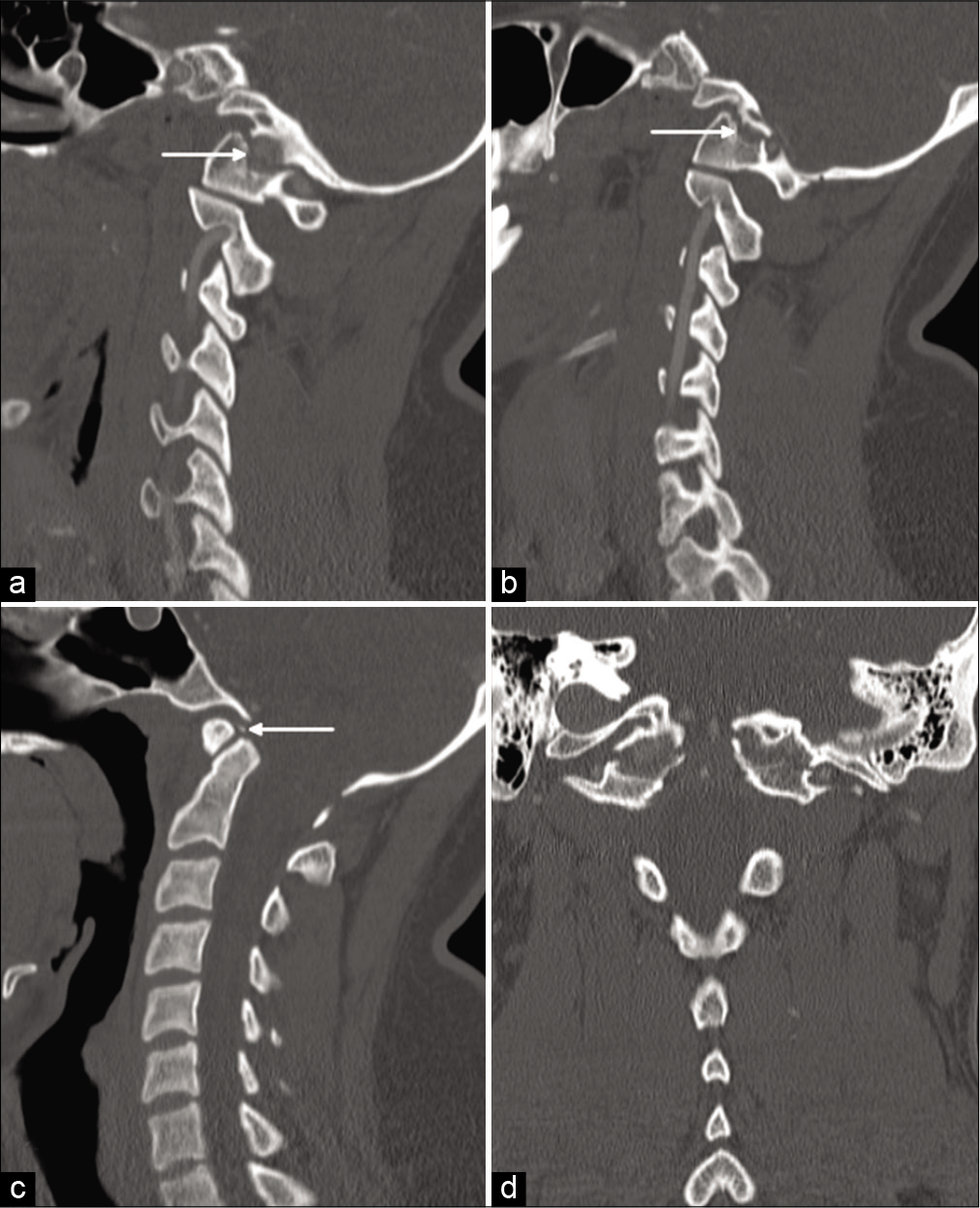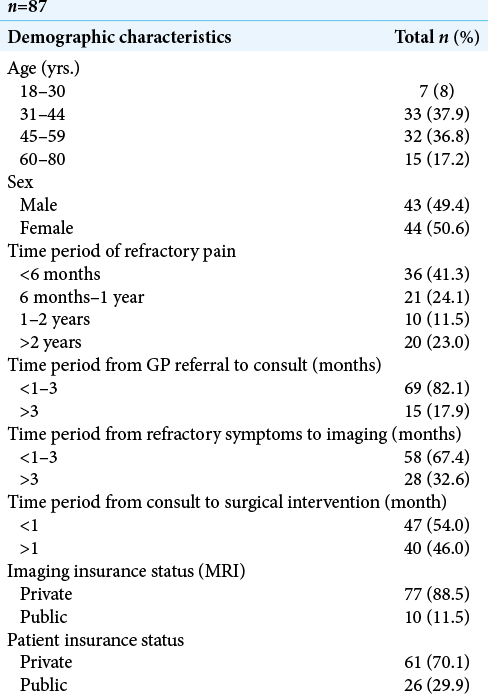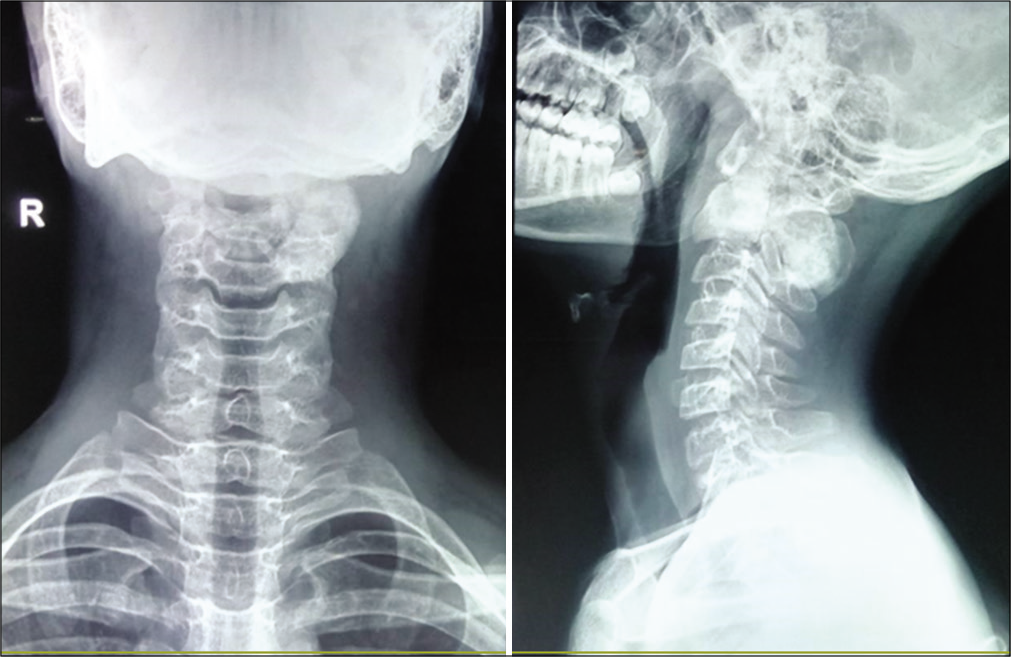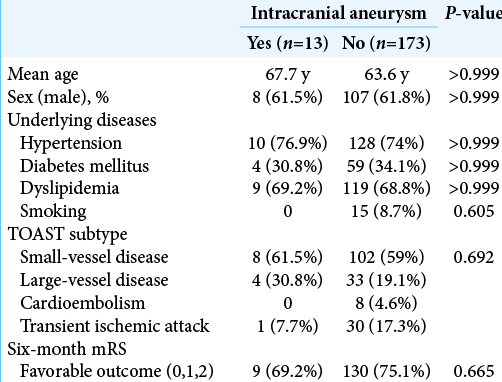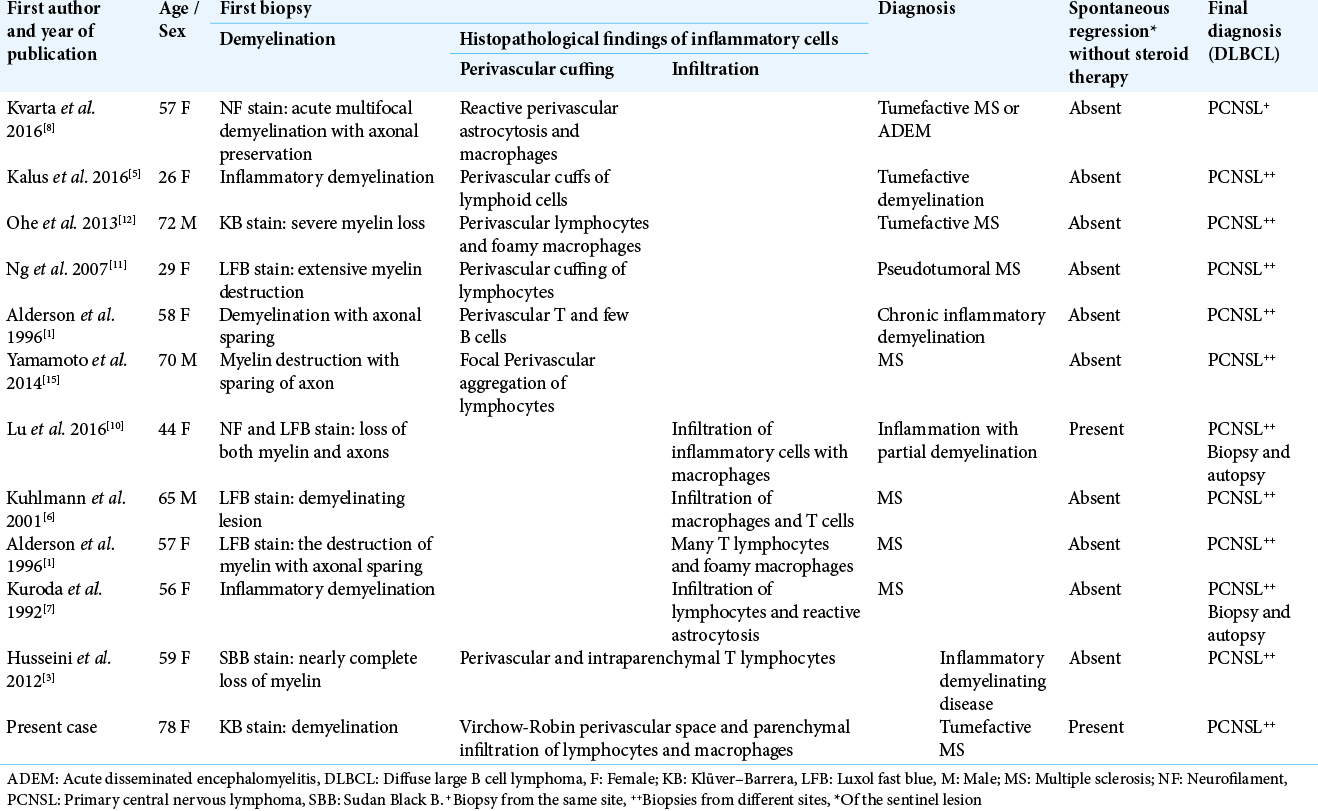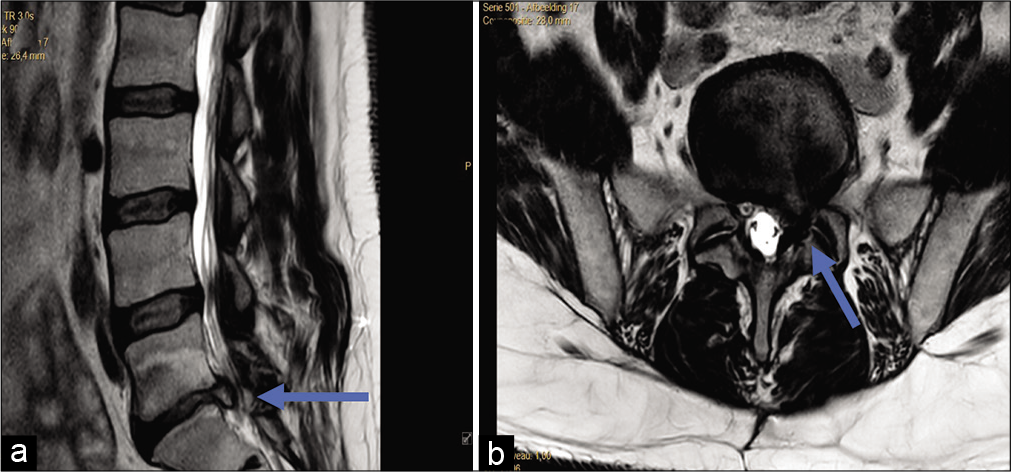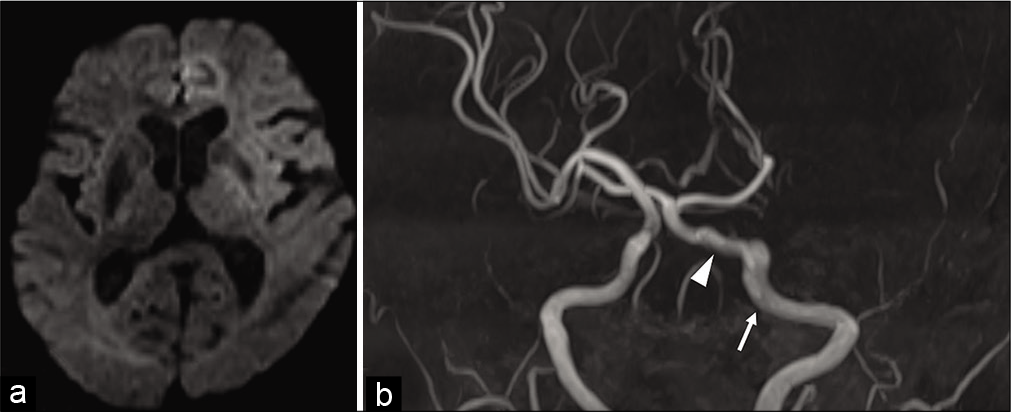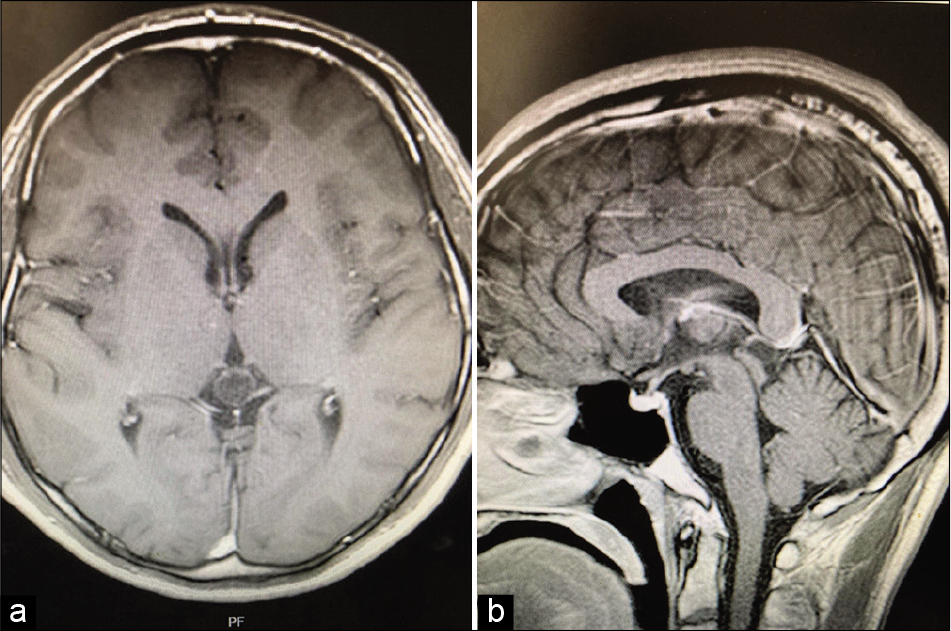Surgical clip occlusion of the V3 segment to prevent recurrent cerebral infarction associated with extracranial vertebral artery dissection: A case report
Date of publication: 15-Oct-2020
Background: Recurrent cerebral infarction caused by traumatic extracranial vertebral artery dissection (EVAD) is treated medically and surgically. We report a case of EVAD that was treated using surgical clip occlusion of the V3 segment to prevent recurrent cerebral infarction.
Successful non-operative management for atlanto-occipital dislocation resulting in spinal cord contusion in a patient with atlanto-occipital assimilation and severe Chiari I malformation
Date of publication: 15-Oct-2020
Background: Atlanto-occipital dislocation (AOD) is a rare, highly morbid, and highly lethal injury that results from high-energy trauma and almost universally requires operative management for satisfactory outcomes. It can be difficult to identify the severity of injury at the time of presentation, and when diagnosis is delayed outcomes worsen significantly. Anatomic anomalies of the craniovertebral junction may further complicate its detection. When such anomalies are present either singly or in combination, they are known to cause space constraints which may increase the likelihood of spinal cord injury. Given that such anomalies and AOD are rare, few examples of patients with both are reported in the literature. Furthermore, it is not clear in what way patient management may be impacted in this context.
Biopsychosocial variations in quality of life outcome following microdiscectomy
Date of publication: 15-Oct-2020
Background: Lumbar microdiscectomy is one of the most frequently performed neurosurgical procedures. In this review, we ask why patients’ outcomes vary so widely even within the same unit, with the same surgeon performing the procedure and utilizing the technique?
Primary Ewing’s sarcoma of the C2 vertebra with progressive quadriparesis: Report of a rare case and review of the literature
Date of publication: 15-Oct-2020
Background: Ewing’s sarcoma is a malignant primitive neuroectodermal tumor (PNET) of childhood and adolescence. Primary Ewing’s sarcoma of the spine is uncommon, and even more rarely involves the C2 vertebra.
Prevalence of intracranial aneurysms among acute ischemic stroke patients
Date of publication: 15-Oct-2020
Background: The prevalence of unruptured intracranial aneurysms varies with age, sex, and genetic diseases, including atherosclerotic diseases. The objectives of this study are to determine the prevalence of intracranial aneurysms among acute ischemic stroke patients and the clinical outcomes of the patients.
Histopathological variation in the demyelinating sentinel lesion of primary central nervous system lymphoma
Date of publication: 15-Oct-2020
Background: Primary central nervous system lymphoma (PCNSL) is one of the least common malignant brain tumors. It is usually diagnosed initially as diffuse large B cell lymphoma (DLBCL). In rare cases, however, a demyelinating lesion referred to as a “sentinel lesion” precedes the actual diagnosis, which usually depicts two distinct patterns of inflammatory cells during histological analysis. This case report describes a unique histological finding and describes the recognized variations in sentinel lesion histopathology.
Surgical management of vertebral metastatic gastrointestinal stromal tumor: Case illustration, literature review, and pooled analysis
Date of publication: 15-Oct-2020
Background: Gastrointestinal stromal tumors (GISTs) very rarely metastasize to the vertebrae. Tyrosine kinase inhibitors (TKIs) confer favorable long-term survival and durable disease control for metastatic disease. Here, we reviewed a case and the literature to determine the various management options, and neurological outcomes for these patients.
Radionuclide tumor necrosis factor-alpha activity in herniated lumbar disc correlates with severe leg pain
Date of publication: 15-Oct-2020
Background: Lumbar disc herniation is often associated with an inflammatory process. In this context, inflammation has been considered a key factor in the modulation of pain. Here, we present a case of inflammatory activity directly documented in a patient with a lumbar disc herniation.
Successful mechanical thrombectomy using a combined technique for internal carotid artery occlusion with persistent primitive trigeminal artery
Date of publication: 15-Oct-2020
Background: The prevalence of persistent primitive trigeminal artery (PPTA) has been reported to be 0.1–0.6%. We report the successful recanalization of internal carotid artery (ICA) without embolization to new vascular territory (ENT) using a combined technique in a case of ICA occlusion with PPTA.
Endoscopic-assisted paramedian infratentorial supracerebellar approach for pineal cyst – How I do it Video clip
Date of publication: 15-Oct-2020
Background: The endoscopic supracerebellar-infratentorial (SCIT) approach is a viable method to access pathology of the posterior incisura, but a narrow working space and frequent instrument conflict can potentially limit its surgical efficacy. We planned an endoscopic-assisted paramedian infratentorial supracerebellar approach for pineal cyst.


